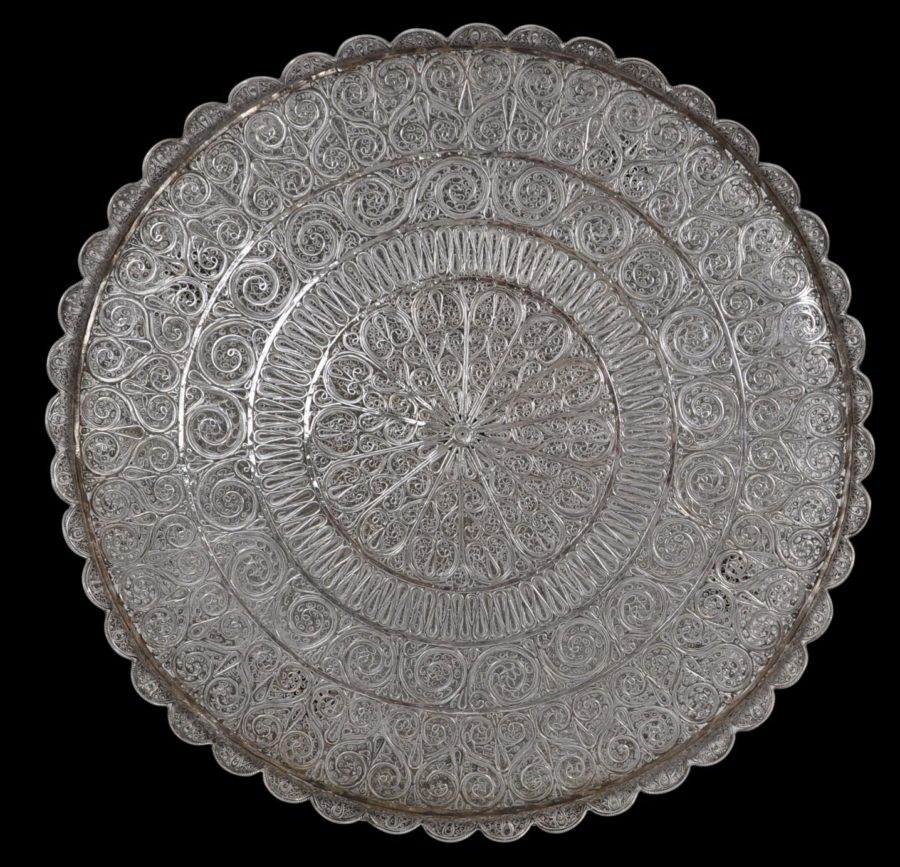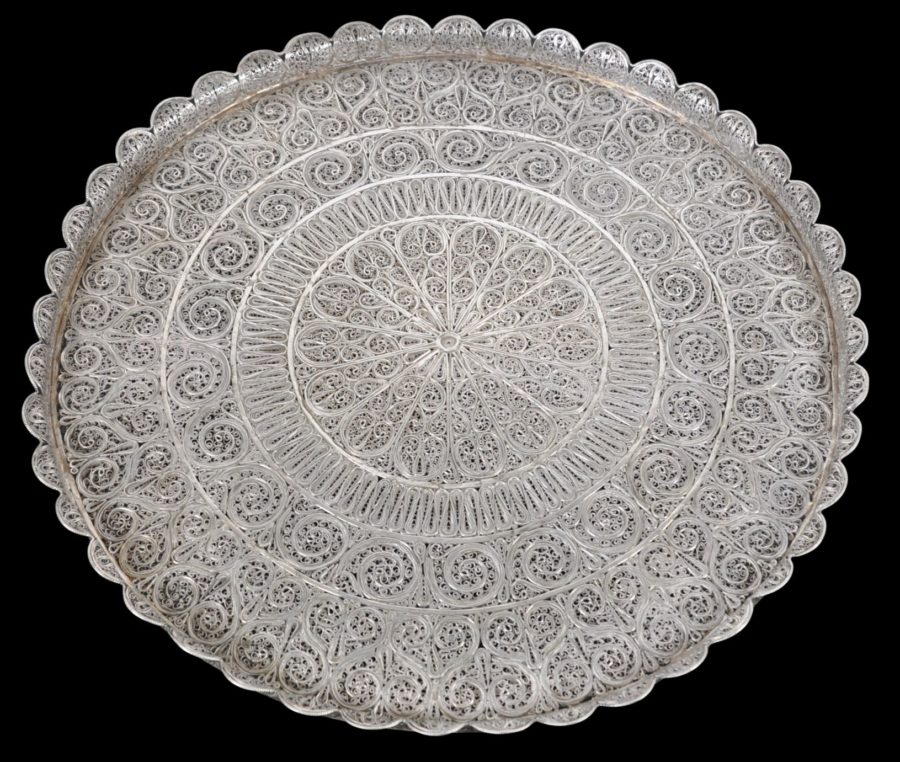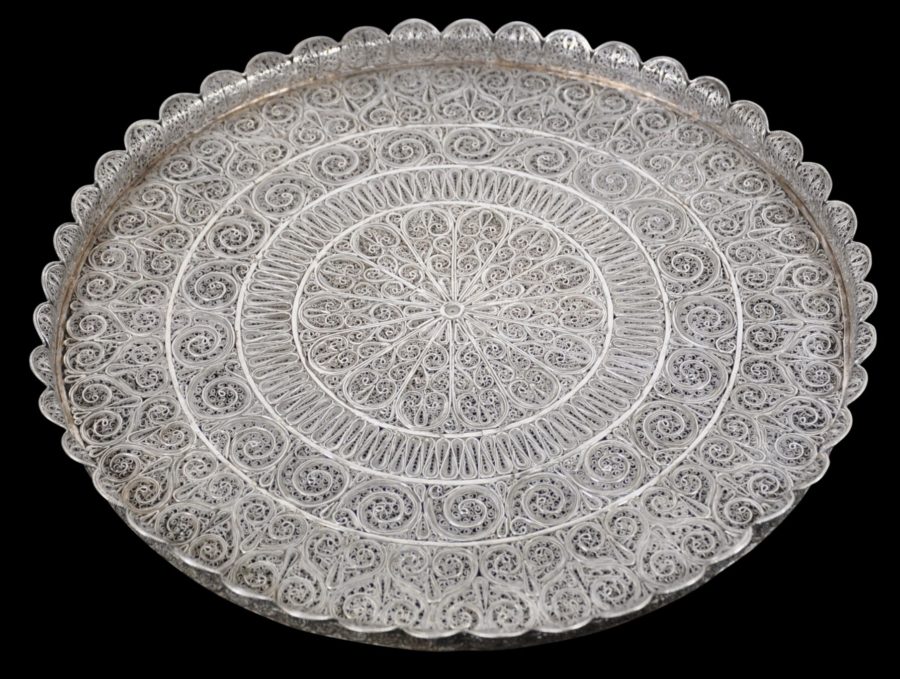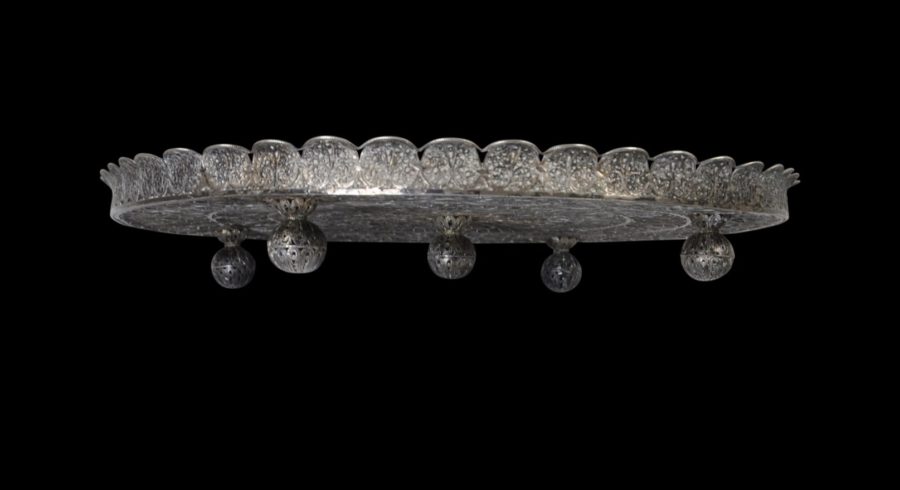This salver or dish is of wide flattened bands of silver wire in-filled with extremely fine twisted silver wire work. It has a rim which flattens out into an edge of forty-four scalloped lunettes which itself is finished with very fine rope-twist filigree edging.
The salver stands on five hollow spheres also made from silver filigree.
It is an unusually large example of this type of salver.
The combination of wide, flattened wire components with fine twisted filigree work is found on articles often ascribed to Goa of the second half of the seventeenth century – see Menshikova, 2006, p. 43 for two examples, and p. 67, p. 81 and p. 88 for three others which also have similar filigree ball feet as the salver here. Menshikova also illustrates a filigree dish of similar proportions that is part of the Indian toilet set of Catherine the Great of Russia (p. 58) which is recorded in a Winter Palace inventory of 1789. The author also refers to filigree items of this type as having been made by ‘Chinese masters in India or Southeast Asia’ in the seventeenth century, which leaves open the possibility that such items might have been made in Batavia perhaps, and most probably traded by the Dutch East India Company (VOC). Two caskets that also show the flattened and fine filigree wire mix and which have filigree ball feet are illustrated in Museo de Sao Roque (2006, p. 212 and p. 214). Both are attributed simply to India. Karimnagar is another possible place of manufacture where the style of filigree work is not unlike that attributed to Goa.
Jordan-Gschwend & Lowe (2015, p. 53) illustrates an almost identical dish and ascribes it to ‘possibly’ 17th century Goa. However, we fell this style is later.
This salver is in excellent condition: there are no losses or repairs.
References
Jordan-Gschwend, A., & K.J.P. Lowe (eds.), The Global City: On the Streets of Renaissance Lisbon, Paul Holberton Publishing, 2015.
Menshikova, M., Silver – Wonders from the East: Filigree of the Tsars, Hermitage Amsterdam, 2006.
Museo de Sao Roque, The Heritage of Rauluchantim, 2006.





